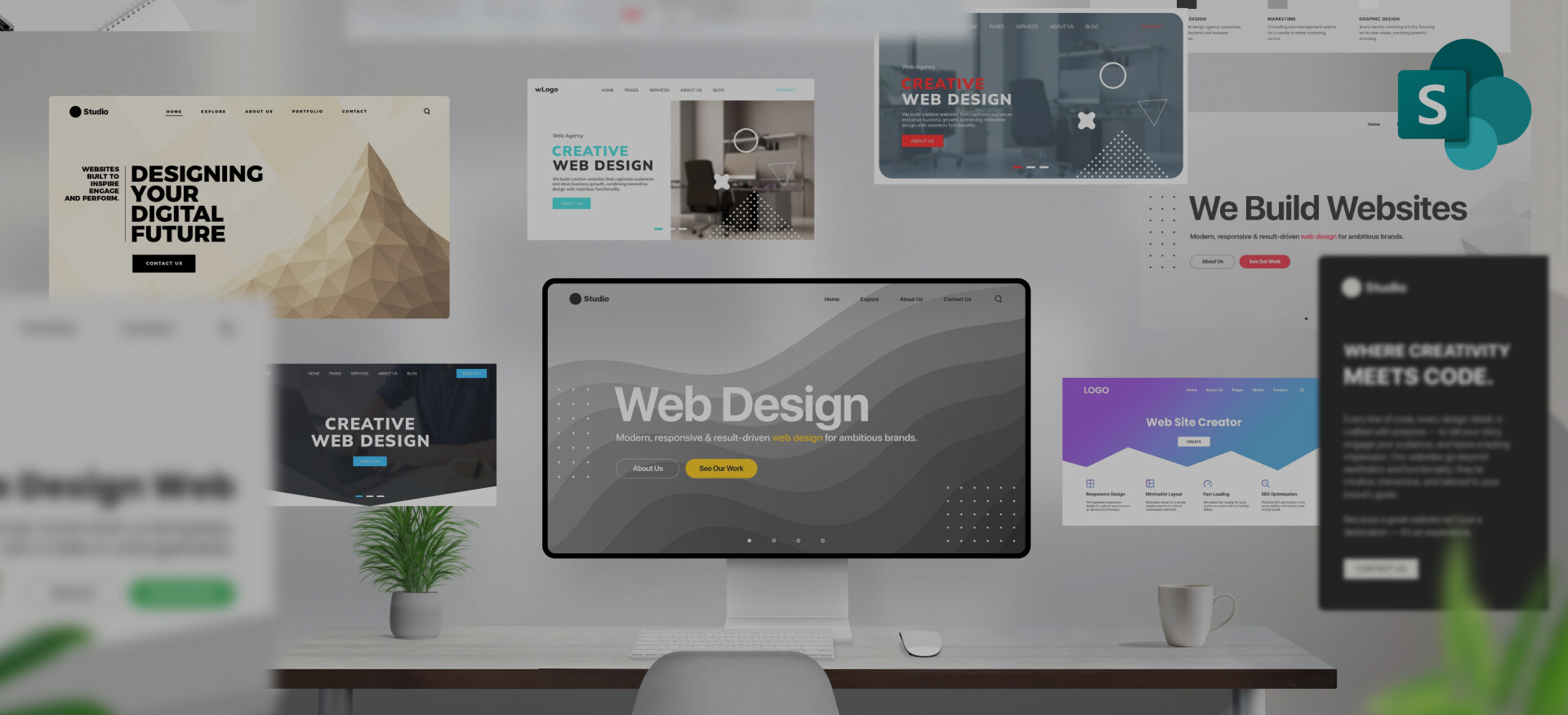Marketing has evolved over the years, transitioning from a product-centric approach to a customer-centric one.
What is the marketing concept? The marketing concept encourages businesses to focus not just on creating products but on understanding and fulfilling customer needs, desires, and expectations in a manner that leads to mutual satisfaction for both the customer and the company.
This shift is important in today’s highly competitive and fast-paced business environment.
In the early days, companies focused mainly on product-oriented marketing, where the focus was solely on creating and producing products and then pushing them into the market.
Over time, however, this strategy proved to be ineffective, especially as consumers became more empowered and discerning.
For example, when considering the best website builder for SEO, businesses started realizing that simply having a product wasn't enough—they needed to consider SEO, user experience, and customer satisfaction as part of the overall strategy.
The rise of the marketing concept is in response to this shift in focus from the producer to the consumer.
What is the Marketing Concept?
The marketing concept is a business philosophy focused on meeting consumer needs while achieving organizational objectives.
It emphasizes a customer-centric approach, where all marketing efforts prioritize understanding customer needs, delivering exceptional value through products or services, and fostering long-term customer relationships. For example, if you're wondering how does Shopify work and whether it aligns with customer-centric strategies, you'll see that its focus on simplifying e-commerce for businesses fits well within the marketing concept.
What is a marketing concept in simpler terms? It's the market concept that places customers at the heart of every business decision, contrasting with older models like the selling concept, which prioritizes aggressive sales over customer value.
5 Major Elements of the Marketing Concept
The marketing concept is a customer-focused philosophy that emphasizes understanding and meeting customer needs while achieving organizational objectives. It represents a shift from traditional product- and sales-oriented approaches to a more customer-centric model.
 This concept of marketing is driven by five major components that guide businesses in creating value, building customer loyalty, and achieving long-term success.
This concept of marketing is driven by five major components that guide businesses in creating value, building customer loyalty, and achieving long-term success.
Here are the five major elements of the marketing concept:
Comparison of Marketing Concept Elements
To visualize the strengths of each element, here's a comparison table:
| Element | Focus Area | Key Strength | Example Application |
|---|---|---|---|
| Customer Orientation | Understanding customer needs | Builds loyalty through personalized solutions | Tailored product designs via enterprise SEO services |
| Integrated Marketing | Unified messaging | Ensures consistent brand experience | Cohesive campaigns with corporate branding services |
| Profitability | Sustainable revenue | Balances value and cost for long-term gain | Optimized ROI with SEO marketing agency |
| Societal Marketing | Ethical and societal impact | Enhances reputation among conscious consumers | Sustainable practices with design retainer services |
| Customer Relationship Management (CRM) | Long-term relationships | Increases retention with personalized engagement | Enhanced loyalty via ecommerce SEO marketing services |
This table highlights how each element contributes uniquely to the marketing concept, aiding businesses in strategic planning.
1. Customer Orientation
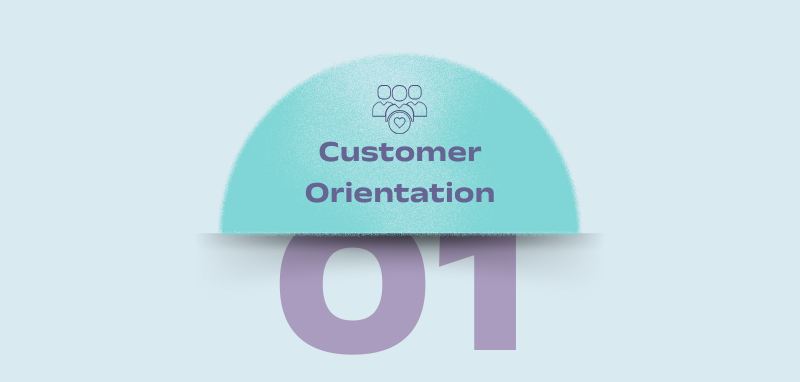
Customer orientation is the foundation of the marketing concept. It emphasizes the importance of understanding the needs and wants of customers before creating products and services.
Rather than pushing products onto customers, companies are encouraged to focus on identifying and fulfilling customer expectations. Working closely with an enterprise SEO consultant can also ensure that your digital presence aligns with customer search behavior and expectations, improving customer satisfaction. Additionally, leveraging enterprise SEO services can help optimize your website, making it more accessible and relevant to your target audience, ultimately improving customer satisfaction.
The main key aspects of customer orientation are:
- Market Research: Continuous gathering of data on customer preferences, behaviors, and pain points.
- Customer-Centric Product Design: Products are designed to meet the specific demands of customers, ensuring they provide real value.
- Personalization: Offering tailored solutions that resonate with individual customer needs.
By prioritizing customer needs, businesses are able to differentiate themselves from competitors, foster customer loyalty, and build stronger market positions.
2. Integrated Marketing

Integrated marketing refers to the coordination and alignment of all marketing activities to ensure that a consistent and unified message is communicated to customers.
Every aspect of a company’s marketing, from advertising to customer service, should work together to create a seamless customer experience. In this process, advertisement examples play a role in effectively conveying your brand's message across platforms.
The main key aspects of integrated marketing are:
- Cross-Functional Collaboration: Marketing, sales, product development, customer service, and other departments must be aligned to meet customer expectations.
- Consistent Messaging: From advertising campaigns to digital interactions, all communications should present a coherent and clear brand message.
- Holistic Customer Experience: Customers should have a consistent experience across all touchpoints—whether interacting with a brand online, in-store, or through customer support.
Integrated marketing ensures that customers receive consistent and relevant messages that reinforce the brand’s value proposition, ultimately enhancing customer satisfaction and loyalty. Corporate branding services play a key role in this process by helping businesses establish a unified identity that resonates across all marketing channels, ensuring every interaction is aligned with the brand’s values and messaging.
3. Profitability

The marketing concept is not only about satisfying customer needs but also about ensuring long-term profitability for the company.
Profitability is achieved by delivering value to customers in a way that the business can generate sustainable income. It involves balancing customer satisfaction with cost management to maintain healthy profit margins.
The main key aspects of profitability include:
- Value Proposition: Businesses must offer products that provide real value to customers, justifying their pricing and fostering long-term customer loyalty.
- Cost Efficiency: By optimizing operations and marketing strategies, businesses can reduce costs while maximizing the customer value provided.
- Customer Lifetime Value (CLV): Focusing on customer retention and long-term relationships, rather than just one-time transactions, to enhance profitability over time.
For businesses looking to optimize their profitability, partnering with an SEO marketing agency can be a key strategy. An SEO marketing agency helps ensure that the business’s online presence is effectively optimized, leading to higher organic traffic, better conversion rates, and ultimately greater long-term profitability by increasing customer retention and driving sales growth.
Companies that implement the profitability aspect of the marketing concept focus on generating revenue through value creation, ultimately ensuring both customer satisfaction and financial success.
4. Societal Marketing Concept

The societal marketing concept takes the marketing concept one step further by emphasizing the balance between customer satisfaction and societal welfare.
Businesses are encouraged to make decisions that not only benefit customers but also contribute positively to society and the environment.
This philosophy recognizes that businesses have an ethical responsibility to consider the impact of their operations on society at large.
As part of this responsibility, companies leveraging modern tools like an enterprise SEO solution can ensure their marketing efforts align with ethical standards and reach the right audience without manipulation.
Similarly, design retainer services can be a valuable option for companies seeking continuous design support while ensuring their branding aligns with ethical and societal values.
The main key aspects of the societal marketing concept include:
- Corporate Social Responsibility (CSR): Engaging in practices that support environmental sustainability, social causes, and ethical standards.
- Ethical Marketing: Ensuring that marketing practices do not manipulate or exploit vulnerable customers, but instead promote honesty and transparency.
- Sustainability Initiatives: Businesses must adopt sustainable practices in product development, sourcing, and distribution to minimize their environmental footprint.
By adopting the societal marketing concept, companies can build a positive brand reputation, attract socially conscious consumers, and contribute to the well-being of society.
5. Customer Relationship Management (CRM)
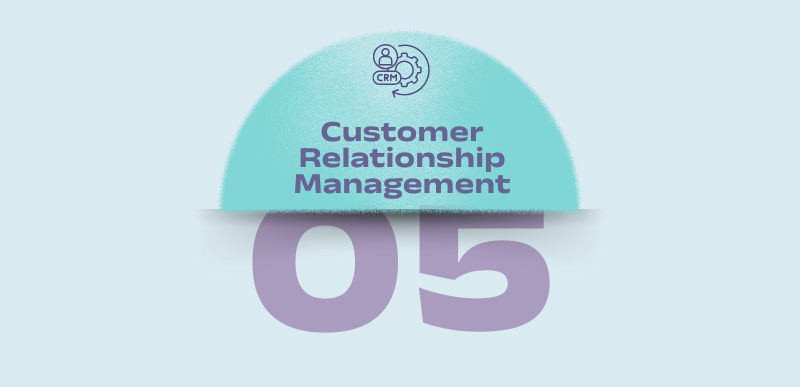
Customer Relationship Management (CRM) focuses on building and nurturing long-term relationships with customers through personalized engagement and communication.
CRM emphasizes the importance of retaining customers over acquiring new ones, as maintaining loyal customers can be more profitable in the long run.
It involves using data and technology to understand customer behavior, preferences, and needs. With tools like keyword ranking report software, businesses can track customer behavior and enhance CRM efforts.
Additionally, businesses can benefit from ecommerce SEO marketing services, which help optimize the online shopping experience, improve visibility, and increase customer engagement, all of which contribute to the success of CRM strategies.
The main key aspects of CRM include:
- Personalized Communication: Tailoring messages and offers to specific customer segments to make them feel valued and understood.
- Customer Retention Strategies: Creating loyalty programs, offering exclusive deals, and delivering exceptional customer service to encourage repeat business.
- Data-Driven Insights: Using CRM systems to track and analyze customer interactions, allowing businesses to make informed decisions and anticipate customer needs.
CRM is a key driver of customer satisfaction and loyalty. It helps businesses increase customer retention, improve customer service, and ultimately drive profitability by fostering long-term, mutually beneficial relationships with customers.
The 4Cs and 7Ps in the Marketing Concept
In the context of the marketing concept, the 4Cs and 7Ps are frameworks that guide businesses in designing and implementing marketing strategies that effectively resonate with customers, meet their needs, and achieve organizational goals.
While the 4Cs focus on customer-centric strategies, the 7Ps represent a more comprehensive approach to delivering value across various touchpoints.
The 4Cs (Customer-Centered Approach)
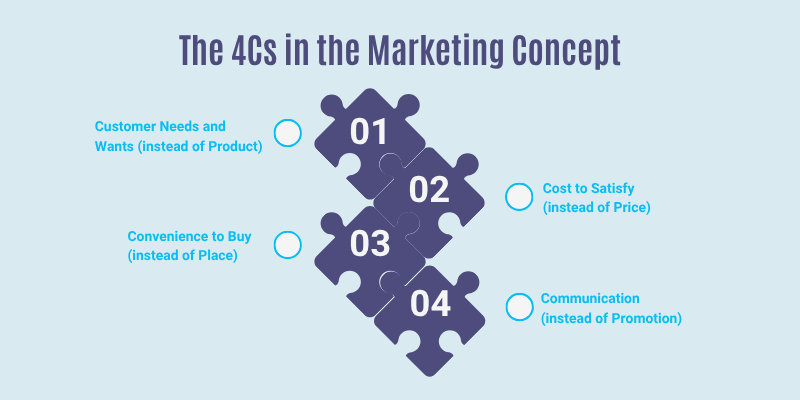
The 4Cs model was introduced by Robert Lauterborn as a customer-centric alternative to the 4Ps (Product, Price, Place, Promotion).
The 4Cs focus on understanding and delivering customer value, which aligns directly with the core principle of the marketing concept: customer orientation.
1. Customer Needs and Wants (instead of Product)
This element emphasizes understanding what customers truly need and want, rather than merely focusing on the product itself. Businesses must ensure that their offerings address specific customer demands. A strong strategy may involve incorporating programmatic SEO services to better align the product with customer search behavior.
It’s major points are:
- Focus on solving customer problems.
- Ensure the product satisfies customer needs, wants, and desires.
2. Cost to Satisfy (instead of Price)
Rather than just focusing on the monetary price of a product, the cost to satisfy includes the total cost that a customer will incur, including time, effort, and convenience.
This perspective helps businesses ensure that customers are willing to pay the total price for the overall experience.
The major points are:
- Consider both monetary and non-monetary costs.
- Offer value by optimizing the customer’s overall experience.
3. Convenience to Buy (instead of Place)
This element highlights the importance of making the purchasing process as convenient as possible for customers.
The focus is on ensuring that customers can easily buy the product from the most accessible channels, whether online, in physical stores, or through other platforms.
Consulting with PIM Consultants can help streamline product data across these channels, ensuring a seamless buying experience for customers.
It’s major points are:
- Ensure accessibility through multiple channels.
- Make the buying process seamless for customers.
4. Communication (instead of Promotion)
This component emphasizes two-way communication between the business and its customers, rather than simply pushing promotional messages.
It focuses on building relationships, gathering feedback, and engaging with customers in a way that resonates with them.
It’s major points are:
- Engage with customers through dialogue.
- Foster feedback loops and build lasting relationships.
In the context of understanding how businesses can reach and engage customers effectively, is affiliate marketing legit has become a popular question, especially as it offers a way to tap into customer-centered strategies by involving third-party affiliates to promote products.
The 7Ps (Extended Marketing Mix)
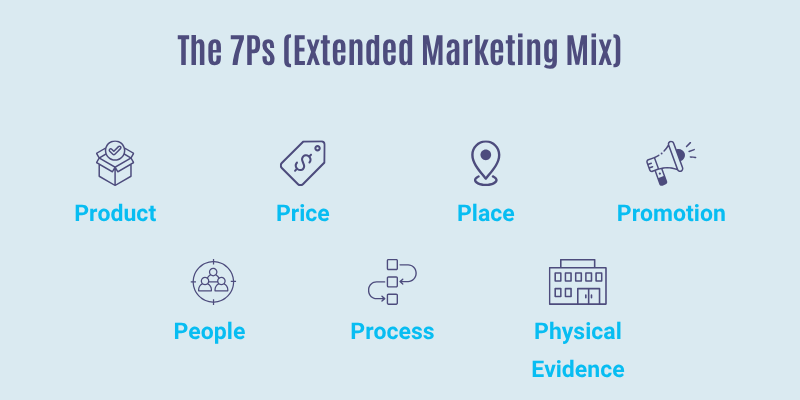
The 7Ps extend the original marketing mix of the 4Ps to include additional elements that are crucial in today’s dynamic market environment.
These elements ensure businesses not only meet customer needs but also provide a consistent, positive experience across all interactions.
1. Product
The product is the actual offering that satisfies customer needs and wants.
A successful product must be developed with an understanding of customer preferences, competitive positioning, and market demand.
Key Focus:
- Design and develop products based on customer needs.
- Offer superior features, quality, and benefits that stand out from competitors.
For example, a smartphone with cutting-edge technology, an excellent camera, and long battery life addresses customer desires for innovation, performance, and value.
2. Price
Price refers to the value that a customer is willing to pay for a product or service.
Pricing strategies should reflect the perceived value of the product, market positioning, and company goals.
Key Focus:
- Set a price that reflects the value of the product.
- Consider customer willingness to pay and competitive pricing.
For example, a tiered pricing strategy for a service, where a basic version is offered at a lower price and a premium version is available for a higher price, allows a business to cater to different customer segments.
3. Place
Place involves the distribution channels through which the product reaches the customer. Businesses must ensure that their products are available in the right locations and accessible via the most convenient channels.
Key Focus:
- Ensure products are available at the right time and place.
- Use both physical and digital channels effectively.
For example, a global brand like Nike uses a combination of retail stores, online shopping platforms, and third-party distributors to ensure customers can easily access products regardless of location.
4. Promotion
Promotion involves all marketing communications used to inform, persuade, and remind customers about the product. This includes advertising, sales promotions, public relations, and digital marketing.
Key Focus:
- Engage customers through multiple channels (TV, digital, social media).
- Design campaigns that resonate with target audiences.
For example, a new product launch might involve a multi-channel campaign that includes social media ads, email newsletters, and influencer partnerships to create buzz and attract customers. Effective product & brand launch services can help streamline this multi-channel approach, ensuring the right messaging reaches the right audience across all platforms.
5. People
The people element refers to the individuals involved in the business process, including employees, customers, and anyone who interacts with the product or service.
Especially in service-based industries, people play a significant role in shaping customer experience.
Understanding concepts like What is Network Marketing can help businesses leverage relationships and build networks, enhancing the customer experience through stronger connections.
Key Focus:
- Train employees to offer exceptional customer service.
- Ensure customer-facing employees represent the brand well.
For example, a luxury hotel ensures that its staff is highly trained to offer personalized, top-notch service, enhancing the overall customer experience and reinforcing the brand’s reputation for excellence.
6. Process
Process refers to the systems and procedures that businesses use to deliver their products or services to customers.
Efficient processes are essential to ensure smooth operations, minimize errors, and maximize customer satisfaction.
Key Focus:
- Streamline operational processes to provide quick and efficient service.
- Enhance customer experience by ensuring smooth transactions and interactions.
For example, a fast-food chain like McDonald’s ensures that its order processing system is efficient, with minimal wait times, and consistent food quality, ensuring a seamless customer experience every time.
7. Physical Evidence
Physical evidence includes the tangible elements that help customers evaluate the quality of a product or service. This could be the store ambiance, branding materials, packaging, or the environment where the service is delivered.
Key Focus:
- Ensure the physical environment aligns with the brand promise.
- Provide tangible cues that reinforce quality and value.
For example, a high-end spa uses luxurious décor, branded towels, and high-quality amenities as physical evidence of its commitment to delivering an exceptional, premium experience.
Innovative Marketing Concept Examples
To explain the concept of marketing strategies within the marketing concept, consider real-world marketing concept examples that demonstrate customer-centric approaches.
A prime marketing concept example is Apple, which designs products like the iPhone based on user needs for intuitive technology and seamless integration, rather than just pushing hardware.
Another marketing concept example is Amazon's personalized recommendations, using data to anticipate customer desires and foster loyalty.
Innovative marketing concepts build on this by incorporating emerging technologies. For instance, AI-driven personalization in Netflix's content suggestions represents innovative marketing concepts that predict and fulfill viewer preferences in real-time, enhancing engagement and retention.
These marketing concept examples show how businesses can adapt the marketing concept to modern digital landscapes.
Marketing Concept vs Selling Concept
To fully grasp what is the marketing concept, it's helpful to compare it with the selling concept.
The selling concept focuses on aggressive promotion and sales techniques to push products, assuming customers need convincing to buy. This is product-oriented and short-term, often leading to one-time transactions.
In contrast, the marketing concept prioritizes understanding customer needs first, building relationships, and delivering value for long-term loyalty. For example, while a selling concept approach might involve high-pressure ads for a gadget, a marketing concept strategy would research customer pain points and tailor the product accordingly.
This shift from selling concept to marketing concept is key in today's buyer-empowered market.
5 Benefits of the Marketing Concept
Adopting the marketing concept offers several key benefits that can significantly enhance a company’s ability to build lasting relationships with customers and ensure long-term success.
By focusing on customer needs, delivering value, and continuously improving business practices, companies can experience a range of advantages, including enhanced customer satisfaction, a competitive edge, improved profitability, brand loyalty, and sustainable growth. As a part of modern marketing strategies, content marketing tools like SEO, email marketing, and social media management play a crucial role in ensuring that the marketing concept is executed effectively.
1. Enhanced Customer Satisfaction
A primary benefit of the marketing concept is the focus on customer satisfaction. By understanding the needs, desires, and preferences of customers, businesses can design products and services that truly resonate with their target market. This customer-centric approach helps in:
- Creating Relevant Products: When businesses tailor their offerings to customer needs, they are more likely to meet or exceed expectations, leading to higher satisfaction.
- Increased Loyalty: Satisfied customers are more likely to return, leading to repeat business.
- Positive Word-of-Mouth: Happy customers often become brand advocates, spreading positive reviews and recommendations, which can attract new customers.
As customer satisfaction increases, businesses experience higher retention rates, which ultimately enhances their brand reputation and market position.
2. Improved Competitive Advantage
The marketing concept also helps businesses gain a competitive advantage in the marketplace. Companies that prioritize customer needs and satisfaction are more likely to stand out in crowded and competitive industries. By focusing on customer-centric strategies, businesses can:
- Differentiate Themselves from Competitors: Offering tailored products, services, or experiences can help businesses carve out a unique position in the market.
- Create Unique Value Propositions: By addressing customer pain points and offering solutions that competitors don't, businesses can create compelling reasons for customers to choose them over others.
By aligning their strategies with customer demands, businesses can maintain a strong competitive edge, ensuring they stay relevant in the ever-evolving marketplace.
3. Increased Profitability
One of the key benefits of the marketing concept is increased profitability. A customer-centric approach enables companies to create products and services that customers are willing to pay for, which directly impacts financial performance. This can be achieved through:
- Value-Based Pricing: By offering products that deliver clear value to customers, companies can implement pricing strategies that reflect the value delivered, ensuring customers are willing to pay for it.
- Optimized Marketing Efforts: Marketing campaigns tailored to customer needs are more likely to yield a positive return on investment, maximizing profitability.
- Product Offerings Alignment: By focusing on products or services that are in demand, businesses can drive higher sales and ensure their offerings resonate with their target audience.
As customer satisfaction increases and businesses continue to optimize their offerings, profitability tends to grow, both in the short and long term.
4. Stronger Brand Loyalty
The marketing concept fosters the development of stronger brand loyalty by encouraging companies to build long-term relationships with customers. When businesses prioritize customer relationships and consistently deliver value, they cultivate a sense of trust and loyalty among their customer base. This leads to:
- Long-Term Customer Advocacy: Loyal customers are more likely to promote the brand to others, becoming advocates who contribute to customer acquisition through referrals.
- Reduced Sensitivity to Price: Customers who are loyal to a brand are less likely to be swayed by price changes. Their loyalty is built on the value and satisfaction they derive from the relationship, not just the cost of the product.
- Repeat Purchases: Loyal customers tend to make repeated purchases, increasing the lifetime value of each customer and helping businesses maintain steady revenue streams.
Brand loyalty is a critical driver of business success, leading to both customer retention and increased profitability.
5. Sustainable Business Growth
Finally, the marketing concept helps businesses achieve sustainable growth.
By staying focused on customer needs and continuously adapting to market dynamics, businesses can ensure they remain relevant over time. This leads to:
- Adaptation to Changing Customer Preferences: As customer expectations evolve, businesses that are aligned with the marketing concept are better equipped to adapt and meet new demands.
- Long-Term Relevance: Consistently delivering value and maintaining customer satisfaction helps businesses stay relevant in the market, even in the face of competition or changing trends.
- Strategic Growth: Businesses can strategically expand their market share by targeting new customer segments, launching new products, or entering new markets, all based on customer insights.
Sustainable growth is driven by the continuous alignment of business strategies with customer preferences, ensuring long-term success and relevance.
6 Steps to Implement the Marketing Concept
Implementation of the marketing concept involves aligning all business activities, from product development to customer service, with the goal of meeting customer needs, delivering value, and fostering long-term relationships.
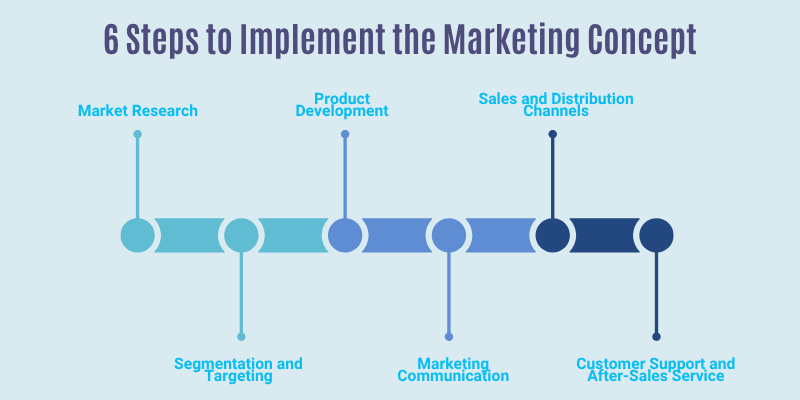
1. Market Research
To implement the marketing concept, businesses must start by understanding their market through comprehensive research.
This includes conducting surveys, focus groups, and analyzing trends in the industry to gather data on customer needs, expectations, and pain points.
2. Segmentation and Targeting
Effective segmentation involves dividing the market into distinct groups based on shared characteristics, such as demographics, purchasing behavior, or geographic location.
Businesses can then target specific segments with tailored marketing messages and product offerings.
3. Product Development
Product development should focus on creating offerings that solve specific problems or meet the desires of target customers.
This involves constant innovation, incorporating feedback from customers, and staying ahead of competitors in terms of product features and benefits.
4. Marketing Communication
Communication strategies should be consistent and aligned with the company’s overall goals.
This includes advertising, content marketing, public relations, and customer engagement through digital channels such as social media.
5. Sales and Distribution Channels
Companies should use the most efficient sales and distribution channels to ensure their products reach the right customers.
This could involve both traditional and digital channels, depending on the target market’s preferences.
6. Customer Support and After-Sales Service
Providing excellent customer service is essential for building strong relationships.
Companies should have systems in place to resolve customer issues promptly, offer support, and ensure customers are satisfied with their purchases.
Conclusion
The marketing concept is a comprehensive strategy that places customers at the center of business operations.
By understanding customer needs, delivering value, and fostering long-term relationships, businesses can achieve sustained growth and profitability.
The evolution of the marketing concept has helped shift businesses from a focus on product production to one that is customer-centric, ensuring that products and services are aligned with customer preferences and market demands.
By implementing the principles of the marketing concept, businesses can achieve long-term success in an increasingly competitive marketplace.





